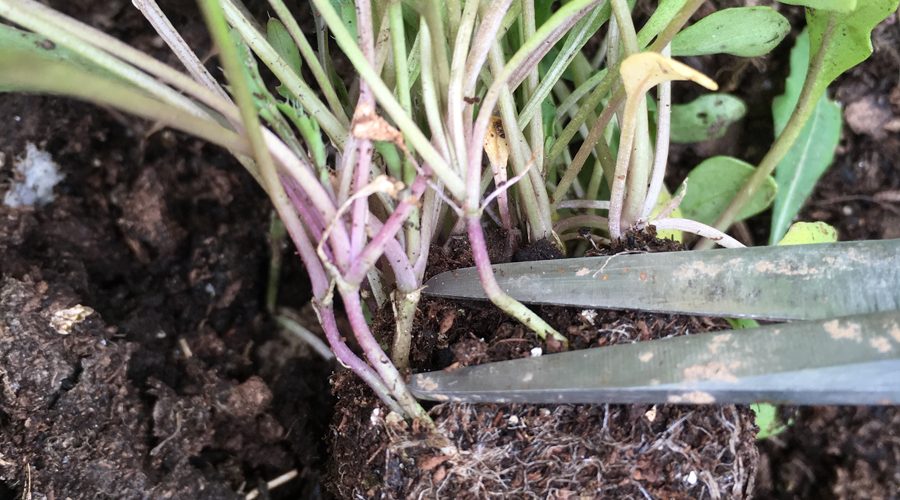You may find that you get a bit more than you’d bargained for occasionally with plug plants, with several seedlings growing in a single clump. This is no bad thing and you can choose how much you want to thin them out.
Do I HAVE to thin out seedlings?
Not necessarily. We have very successfully grown all sorts of things in clumps, without having thinned out the seedlings. This has included beetroots and leeks (in clumps of 2 or 3) as well as spinach, chard and other leaves (in clumps of 3 or 4) and some herbs (e.g. basil and coriander in clumps of 3 or 4 or even 5). The results all lean in the same direction – a perfectly good crop, but perhaps not as big or aesthetically pleasing as hoped. For example, the beetroots didn’t grow as big as those grown individually, although they weren’t far off, and they were slightly misshapen. No bother, we don’t mind wonky veg. The salad leaves grown in clumps were better picked as baby leaves which was fine as baby leaves do look really lovely in salads, and the herbs were a little more leggy than is often the ideal.
Why/when should I thin out seedlings then?
If you are someone who wants to grow nicely-shaped, good-sized carrots, big leafy spinach plants and long, chunky leeks, then you’ll probably prefer to thin out your seedlings so that you grow single plants with the correct spacing (see our growing guide) left between each.
How do I thin out seedlings?
The easiest thing to do is to first choose the strongest, healthiest looking seedling. This is the one you want to keep. Be aware, it’s not always the tallest that you want to keep as this one can sometimes get a bit leggy – choose the one with the healthiest looking leaves instead. Once you’ve selected your champion seedling, simply snip off the other stems carefully with a pair of kitchen scissors. It’s easier to do this than to try and tease them out at the roots as you will be far less likely to damage the plants. Then, simply plant as normal.
When do I need to do this?
If you intend to thin out your plants then it’s best to do this before you put them in the ground.

